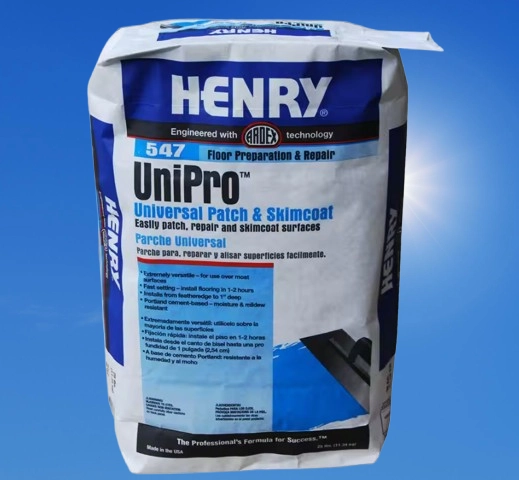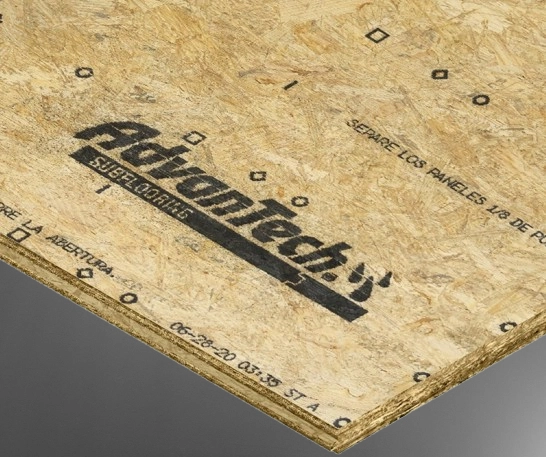Henry 549 vs. 547

WW Henry is a prominent participant in the industry as a manufacturer of patching compounds. They are renowned for having the best floor adhesives and underlayments.
Both the Henry 549 and 547 are great options if you want to level out your floor or have an upcoming job that calls for you to fill in gaps and holes.
It’s challenging to decide which of the two patching compounds to employ for your project because they appear to be so similar when you look at their features.
You’re in luck if you’re struggling to decide between the Henry 549 and Henry 549 since I’ll be contrasting both items in this review and outlining the main distinctions so you can make an informed decision.
Henry 549: What is it?
The Henry 549 Feather Finish is a skim coat and underlayment patch composed of Portland cement and a latex component.
This all-purpose underlayment can be applied to any type of floor, including terrazzo, tile, and concrete.
If you wish to smooth out a floor, Henry 549 is the product to use. It takes less than fifteen minutes to dry. Additionally, the fact that this lotion doesn’t stain is one of its best qualities.
The Henry 549 is incredibly simple to apply, in contrast to many patching compounds. All you need to do is apply the product in thin layers after fully mixing it with water.
This will guarantee that the Henry 549 and the substrate have a solid connection. Additionally, it can be sanded for a smoother finish.
It’s important to note that the Henry 549 doesn’t adhere as well to uneven surfaces. Therefore, please take into consideration alternatives like the Henry 547 if the floor you plan to use it on is really rough.
Henry 547: What is it?
Portland cement is used to make the Henry 547, a universal underlayment. The producer, WW Henry, calls it universal since it may be used on any kind of floor.
There are also some intriguing elements of the Henry 547. For example, the mixture produces a very smooth finish even though it cannot be sanded.
Additionally, the Henry 547 can tolerate pressures of up to 5,000 PSI after curing. It is hence the ideal finish for floors that get a lot of traffic.
You can use the Henery 547 to fill up gaps and cracks or level an uneven floor. Its prolonged working time is another feature of the Henry 547 that I adore.
This will reduce the possibility of error, which is advantageous for inexperienced installers. It has outstanding adhesive strength as well. Nevertheless, the 547 adheres better in thin coats, precisely like the Henry 549.
In What Ways Do They Differ?
- While the 547 is composed of Portland cement, the Henry 549 contains a latex additive.
The ingredients utilized are the first way that the Henry 549 and the 547 differ from one another. As previously stated, the Henry 547 only contains Portland cement, but the 549 has both Portland cement and a latex addition.
The differences below are largely due to this discrepancy in formulations.
- The 549 Henry is sandable, but the 547 is not.
To provide a smoother surface, you can sand the Henry 549 down while it is being installed. But the formula for the 547 isn’t sandable. Sanding is therefore not a possibility.
- Compared to Henry 549, Henry 547 works longer hours.
It takes less than fifteen minutes for the Henry 549 to dry. Both advantages and disadvantages may result from this. Professionals can complete their work much more quickly thanks to the Henry 549’s rapid drying time.
However, because errors cannot be fixed, using the Henry 549 is more challenging for novices or do-it-yourselfers. When deciding between Henry 547 and Henry 549, this is a crucial deciding element.
- Compared to 547, Henry 549 Offers a Smoother Finish
A smoother finish is assured even if Henry 549 is not sanded. This is due to the latex component that the Henry 549 uses to help with self-leveling. The final finish is typically rough because the Henry 547 only uses Portland cement.
- Compared to Henry 549, Henry 547 is stronger.
Do you recall that the Henry 547 is capable of withstanding pressures of up to 5000 PSI? In any case, it’s among the most robust underlayments I’ve ever encountered.
The increased Portland cement content in Henry 547 is the cause of that. As a result, it is the ideal underlayment for floors with heavy traffic.
What Similarities Do They Have?
Henry 549 as well as Henry 547;
- Are produced by the same business.
WW Henry is the same business that makes the Henry 549 and 547. As a result, their qualities are identical. Not to mention, the manufacturer has a stellar reputation.
- Suitable for a Variety of Substrates
You can use both Henry 549 and Henry 547 on a variety of surfaces, regardless of which you choose. This covers flooring made of terrazzo, wood, or concrete.
However, always check with the manufacturer to see if the patching compound is suitable for the floor you plan to apply it to before selecting one.
- Are Quite Simple to Use
Both products are quite easy to work with, despite Henry 549 drying more quickly than its counterpart. Also, you can use either Henry 549 or Henry 547 without having any special abilities.
- Are Compounds for Patching
This could seem self-evident. However, there are some notable similarities. Henry 549 is a patching compound, as is Henry 547. As a result, they can be used to level floors or, better yet, to fill in gaps and fractures.
The Henry 549: Why Choose It?
I believe I should emphasize each product’s unique features as our assessment draws to a close. The extra smooth finish that the Henry 549 offers is what distinguishes it.
Depending on how you look at it, its fast-drying formula is also a benefit. Please be aware, nevertheless, that Henry 549’s adhesive strength is a little mediocre, particularly when applied to uneven surfaces.
The Henry 547: Why Choose It?
However, Henry 547 has a longer working period and a remarkable adhesion strength to substrates. Compared to its predecessor, the Henry 547 will not dry as quickly. Additionally, it dries into a rough surface.
If you want to fill in gaps or level uneven surfaces, I think the Henry 547 should be your first choice.
Which Is Better, Henry 549 or Henry 547?
The majority of individuals use the wrong approach when comparing Henry 549 and Henry 547. Yes, you can use one product in place of the other, but if you look closely at the features, you’ll see that each of these two patching compounds has a specific use where it excels.
For situations where you want a seamless finish in the least amount of time, the Henry 549 is ideal.
This is because the Henry 549’s latex ingredient enhances its self-leveling capabilities. It dries in less than fifteen minutes and can be sanded.
The finest patching compound for applications where strength and adhesion are crucial is Henry 547.
Suppose you are fixing a business building’s floor. Henry 547 will give you a stronger bind to the substrate and a greater resilience to pressure.

